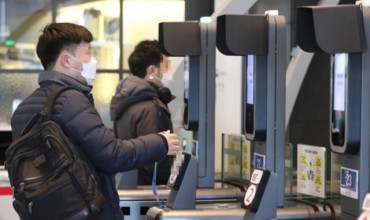
A sign at a local clinic in Seoul reads that tests are available for both COVID-19 and flu on Nov. 4, 2022. (Yonhap)
SEOUL, April 10 (Korea Bizwire) — In a surprising turn of events, the number of influenza cases has rebounded since the end of March this year, despite the usual springtime decrease.
Experts suggest that this unexpected increase may be due to the recent opening of schools and the lifting of the indoor mask mandate on public transportation.
Data from the Korea Disease Control and Prevention Agency’s weekly newsletter, published on Saturday, shows that the national influenza-like illness (ILI) case rate was tallied at 14.5 per 1,000 people during the 13th week of this year (March 26 to April 1), up from 13.2 the previous week.
This is a stark contrast to the steep decline in cases witnessed earlier this year. The case rate peaked at 60.7 in the last week of December 2022, before dropping to 11.6 in the eighth week of this year (February 19-25).
However, this downward trend halted in early March, and since the lifting of the indoor mask mandate on public transportation on March 20, there has been a notable resurgence in cases.
Children between the ages of 7 and 12 have been the hardest hit, with the highest percentage of suspected patients during the 13-week period, at 22.6.
Those aged 13-18 and 19-48 had a suspected percentage of 17.2, while the percentage for those aged 1-6 and 0 years were 17.1 and 12.3, respectively.
Moreover, the number of patients hospitalized for acute respiratory infections, caused by viruses such as adenovirus (HadV), rhinovirus (HRV), and respiratory syncytial virus (HRSV), has also been rapidly increasing.
Patients have reported cold-like symptoms such as runny nose, headache, phlegm, and sore throat.
The number of hospitalized patients has risen from 973 in the 10th week to 1,802 in the 13th week, representing an almost twofold increase in just three weeks and a 19 percent increase from the 12th week (1,514).
Ashley Song (ashley@koreabizwire.com)






